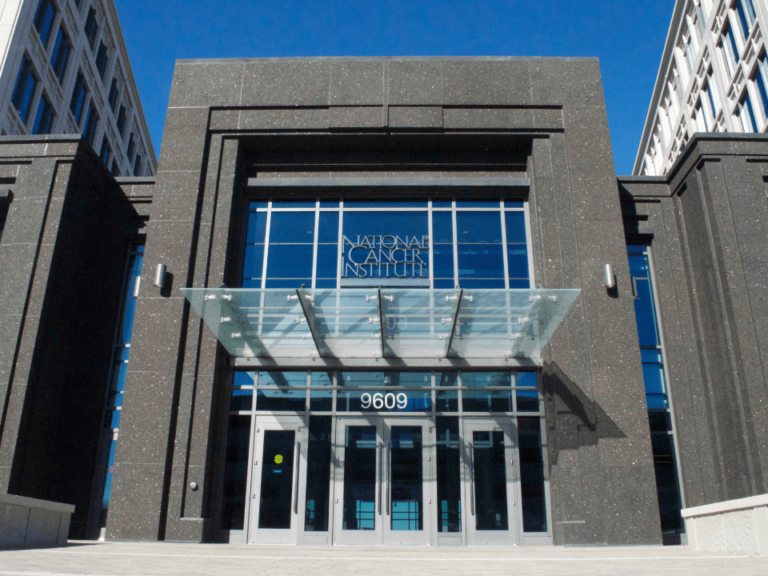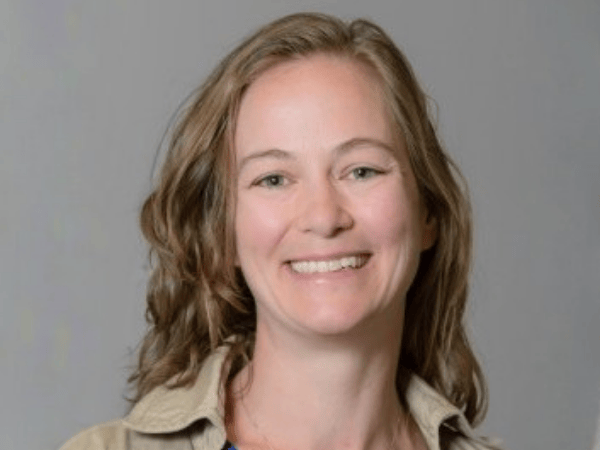

On her first day of medical school at the University of Virginia in 1963, Vivian Pinn waited for the other students who looked like her to show up.
“The other women and other people of color must be late,” she remembers thinking, glancing around at the crowd of white men in the auditorium before her.
Then they called the roll.
“And I’m sitting in the back and I see, everybody’s there,” she said in a conversation with Robert Winn, director and Lipman Chair in Oncology at VCU Massey Comprehensive Cancer Center, and senior associate dean for cancer innovation and professor of pulmonary disease and critical care medicine at VCU School of Medicine.
Winn is the guest editor of The Cancer Letter and the Cancer History Project during Black History Month.
In 1967, Pinn became the second Black woman to graduate from University of Virginia School of Medicine.
In 1982, she was the first African American woman to chair an academic pathology department in the United States, at Howard University College of Medicine.
She went on to become the first full-time director of the Office of Research on Women’s Health at NIH in 1991.
Charlottesville wasn’t fully integrated when Pinn began medical school.
“UVA was still an all-male school except for nurses and those in graduate school,” she said. “Women, and of course minorities, that’s another story we know—they’d only had a trickle here and a trickle there.”
As she sat in the classroom, Pinn’s thoughts drifted to the anatomy lab. As an undergraduate at Wellesely College, she’d heard Harvard Medical School students talk about how important it was to find the right group of lab partners.
“I’m sitting in the back of the room looking at this sea of white men in the South, in the segregated South, wondering, how am I going to survive this?” she said. “Because nobody’s going to want to take on, in Charlottesville at this point, a Black woman as a lab partner.”
The men in her class knew each other through their families, fraternities, and schools, “connections that I don’t have,” she said.
“I was thinking, maybe I should just go on down, get in my old car, and drive home and tell my father,” she said. “I just don’t see how I could do this because it’s going to be tough enough being a medical student, and now I’m not going to have lab partners.”
But as she walked to the front of the classroom, two of her classmates called out.
“Hey, Vivian, do you want to be our lab partner?” they asked.
“All of a sudden that gave me somebody to connect with,” she said.
Reflecting more than 60 years later, Pinn sees this moment as a turning point.
“Everybody talks about inclusion and belonging. That’s a perfect example, because if those guys hadn’t reached out to me, I might well have just tuck-tailed and gone home thinking it was going to be too much of a challenge for me, and too stressful,” she said. “But they reached out to me, and what a difference that made in my life.”
Pinn and her lab group also helped integrate some of the restaurants in Charlottesville. Barbara Starks, the first Black woman graduate of medical school at the University of Virginia, asked Pinn where she had been going to eat her meals.
“It had been a thing for Black students at UVA that they mostly ate in the cafeteria, because most of the restaurants were still segregated,” she said. “I said, ‘I’ve been eating across the street on the corner.’
“For those who don’t know UVA, the street across from the medical school that’s called ‘the corner.’ It’s really just a street, but it’s referred to as ‘the corner.’ And I told her I’d been eating on the corner, and she said, ‘You couldn’t have been, they’re not integrated yet.’
“And I said, ‘Well, they are now, because I’ve been eating there.’
“And it took me maybe 30 years before I told my lab partner that, ‘Kenny, you didn’t know it, but you played a role in civil rights, because you helped to integrate the restaurants on the corner in Charlottesville without even realizing what you were doing.’”
When the time came to find an internship, Pinn expressed an interest in genitourinary care.
“Not many places were taking women in surgery, and they certainly weren’t thinking about women in urology,” she said. “And I didn’t know what I was going to do.”
While at a cocktail party with the New England Society of Pathologists, Pinn met Benjamin Castleman, who was, at the time, chair of pathology at Massachusetts General, “and who is legendary in the field of pathology.”
“He walked up to me, and of course I was quaking because here is the great Dr. Castleman, and he says, ‘Vivian, what are you going to do next year?’ Meaning for my internship.
“And I didn’t know what to say. And this resident standing beside me said, ‘Oh, she wants to be a pathologist.
“And Dr. Castleman looked at me and said, ‘Well, why didn’t you tell me?’”
I’m standing there quaking and I’m thinking, there’s no way this little Black girl—not a Harvard med school graduate—I’m out of UVA, this little Black girl from the country in Virginia, and I’m spending some time here, but there’s no way I’m going to get an internship at the Mass General Hospital.
I didn’t go through the matching program.
And it turns out that what he gave me, which affected my whole career the rest of my life, I became an Research Fellow in Immunopathology at Massachusetts General Hospital, an acting intern and acting resident on an NIH research fellowship.
It paid $300 a month, no taxes, $300 a month. That was my salary for my three years of training there. But it was an NIH fellowship. And that’s how I got into the field.
But to me, it’s sort of interesting how one thing has built on another in my life, just sort of happenstance and things that have happened. If Dr. Castleman hadn’t walked up, and if Arthur hadn’t told him I wanted to be a pathologist, I would never have been in that field. I would’ve been looking for something closer to home that I felt, that maybe, I could get.
And that’s why, when I’m mentoring students or speaking to students, I tell them, reach for the stars. If you don’t reach for it, you don’t know if you’re going to get there. If you don’t aim for it, you’ll never know if there was a possibility you would have it. Just learn from the lessons of my life. It can make a difference for others.
This column features the latest posts to the Cancer History Project by our growing list of contributors.
The Cancer History Project is a free, web-based, collaborative resource intended to mark the 50th anniversary of the National Cancer Act and designed to continue in perpetuity. The objective is to assemble a robust collection of historical documents and make them freely available.
Access to the Cancer History Project is open to the public at CancerHistoryProject.com. You can also follow us on Twitter at @CancerHistProj, or follow our podcast.
Is your institution a contributor to the Cancer History Project? Eligible institutions include cancer centers, advocacy groups, professional societies, pharmaceutical companies, and key organizations in oncology.
To apply to become a contributor, please contact admin@cancerhistoryproject.com.












